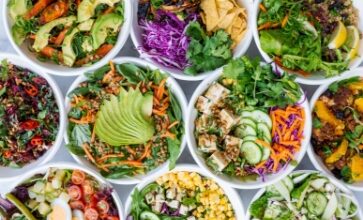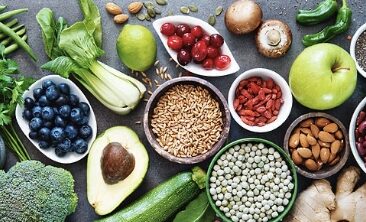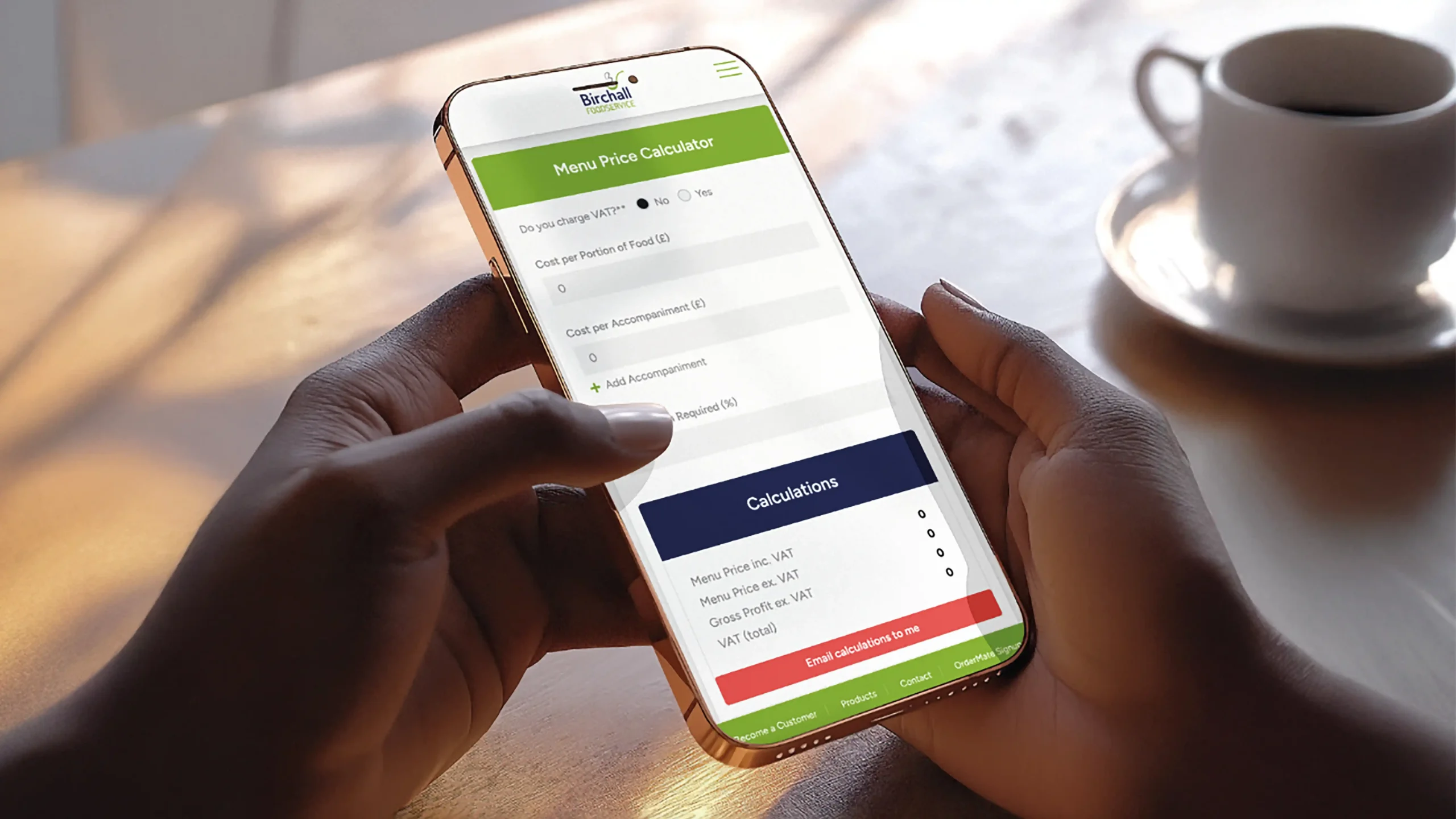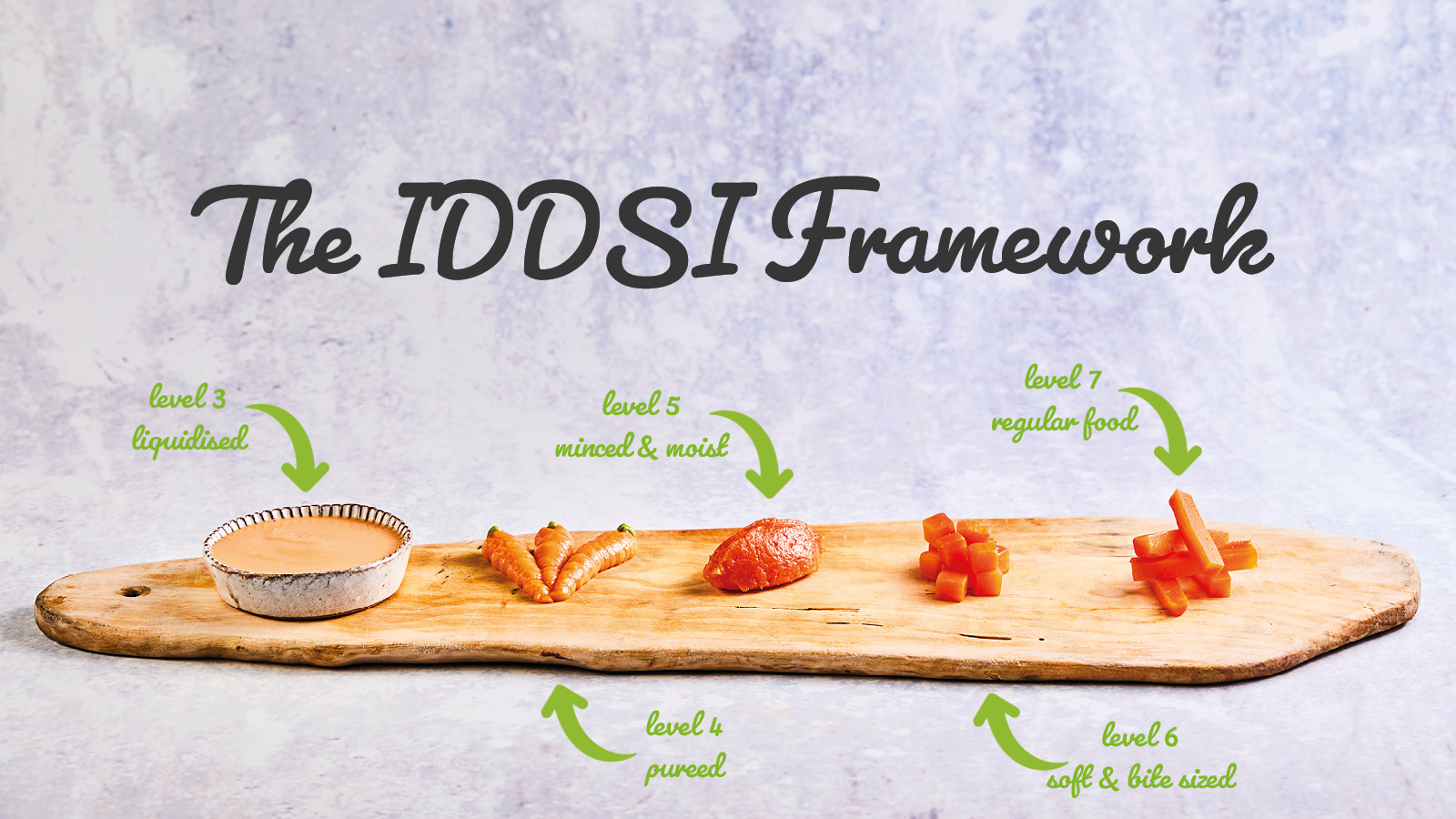
Dysphagia: The IDDSI Levels Framework Explained
What is the IDDSI Levels Framework?
The IDDSI Framework was introduced in April 2019 and provides a common terminology to describe food textures and drink thickness. The guidance also includes detailed information about how to test and ensure that each level of liquid or food is acceptable for patients at that level to consume safely.
Use this simple article to familiarise yourself with the levels and gain some simple and practical ideas to create texture-modified meals in your kitchen.
For further information and recipe inspiration, you can download our Guide to the IDDSI Framework here
We also recommend that you read more about the IDDSI levels and Framework at iddsi.org as well as download the free app.
What does IDDSI stand for?
IDDSI stands for the International Dysphagia Diet Standardisation Initiative.
How many levels are there in the IDDSI Framework?
The IDDSI levels framework consists of a continuum of 8 levels (0 – 7), where drinks are measured from IDDSI Levels 0 –4, while foods are measured from IDDSI Levels 3 – 7.
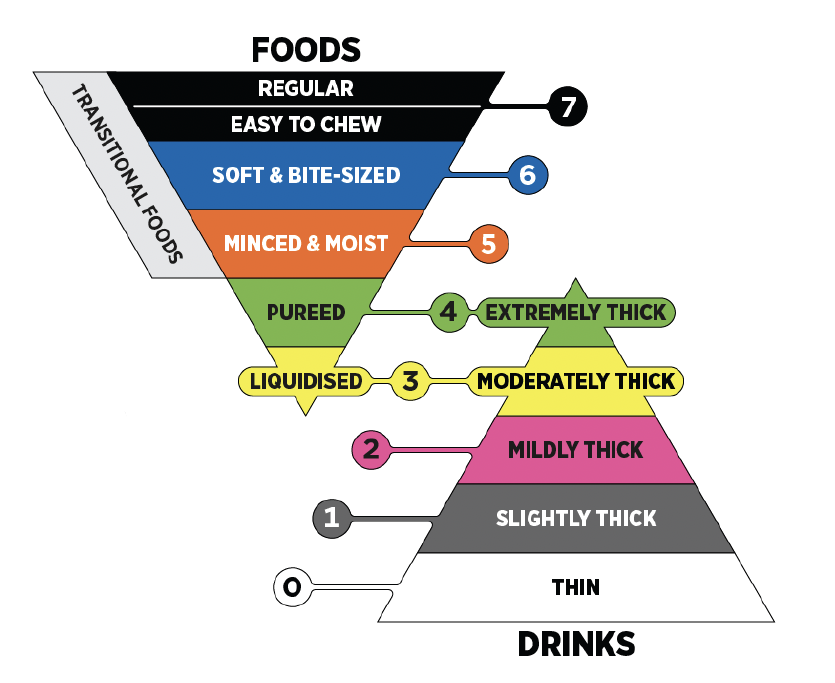
Level 3 – Liquidised
Level 3 food should be puréed separately and passed through a chinois/sieve to ensure it is lump-free. It can be served in a ramekin. Always check the consistency of the food before serving. It should be completely smooth and lump-free. You can use the fork drip test to test for level 3.
How to test:
- Drips slowly in dollops through the prongs of a fork
- Prongs of a fork do not leave a clear pattern on the surface of food
- Spreads out if spilled onto a flat surface
- Easily pours from a spoon when tilted
- Does not stick to a spoon.
Level 4 – Pureed
Level 4 food should be able to hold its own weight but should not be sticky. It can show some very slow movement under gravity, but cannot be poured. The food can be piped, layered or moulded. Liquid must not separate from the food. All elements of the meal should be puréed separately and be completely smooth and lump free.
How to test:
- To check it is smooth, taste the purée, rolling the food around between the tongue and the roof of the mouth
- Food sits in a mound or pile above the fork
- A small amount may flow through and form a tail below the prongs of a fork, but it does not flow or drip through continuously
-
The prongs of a fork can make a clear pattern on the surface of the food and the food retains the indentation of the fork
-
Cohesive enough to hold its shape on a spoon
-
A full spoonful must drop off the spoon, when the spoon is tilted; a very gentle flick may be needed to dislodge the food from the spoon
-
The food should slide off easily, with very little food left on the spoon
-
May spread out slightly or slump very slowly on a flat plate
-
If the food does not fall off the spoon when tilted or stick to the spoon, then it is too thick
Level 5 – Minced and Moist
Food should be soft & moist with no separate thin liquid. The pieces of food should be no bigger than 4mm in size. This can be checked by ensuring the food fits in between the prongs of a standard fork. Measure the distance between the prongs to be sure it is 4mm. Food needs to be pre mashed and plated before reaching the resident. Biting is not required and particles of food can be easily squashed with the tongue.
How to test:
- When pressed with a fork the particles of food should easily be separated and come through the prongs of a fork
- Food can easily be mashed with little pressure
- The food is cohesive enough to hold its shape on a spoon
- A full spoonful should slide off the spoon when tilted, turned sideways or shaken lightly
- The food should slide off easily with very little food left on the spoon – it should not be sticky
Level 6 – Soft and Bite-Sized
Bite-sized pieces of all food items must be no bigger than 15mm and soft and tender throughout, with no separate thin liquids. Gravy and sauces must be very thick. Level 6 food can be mashed and broken down with the pressure of a fork or spoon, before serving and stay in the mashed shape when the fork is removed. Biting is not required, but chewing is. You can test using the fork pressure test.
How to test:
- Pressure from a fork held on its side can be used to cut or break this texture into smaller pieces
- When a sample of food 15mm x 15mm is pressed with the base of a fork or spoon with 390g of pressure, the food squashes and changes shape, and does not return to its original shape when the fork is removed
- Pressure from a spoon held on its side can be used to cut or break this texture into smaller pieces
Level 7 – Regular Food (Easy to Chew)
In response to testing method for foods that are “soft” but with no particle size restriction, IDDSI have announced level 7 regular easy to chew. This new subcategory of Level 7 is designed to meet the needs of individuals who do not have an increased choking risk but might benefit from softer choices. This level is suitable for individuals who have the ability to regulate bite size and their pace of eating and do not exhibit mealtime behaviours that might increase their choking risk.
How to test:
- Foods should be soft and tender and can be cut or separated easily with the side of a fork or spoon
- Foods do not need to be cut or presented in any specific particle size
Dysphagia Workshops at Birchall Foodservice
Our Dysphagia Training Days are designed for healthcare sector caterers seeking to enhance their skill set in preparing dysphagia-friendly meals. These workshops are extremely popular with our care sector customers and cover all the IDDSI levels from 0 to 8. We hold between 2 and 4 of these events throughout the year. You can find out more on our events page. For further information, please get in touch with our team.

